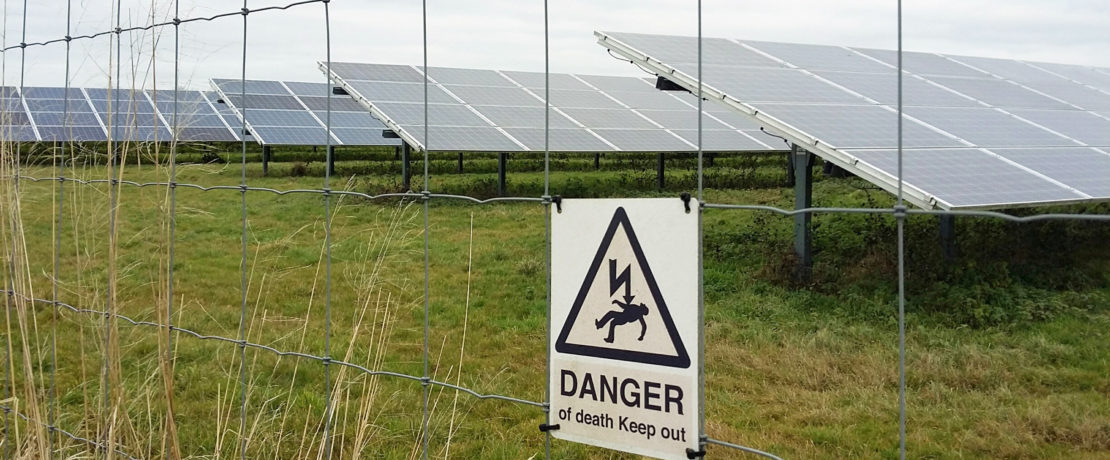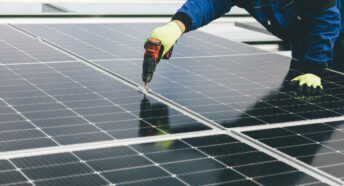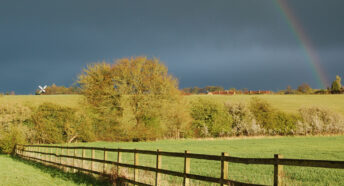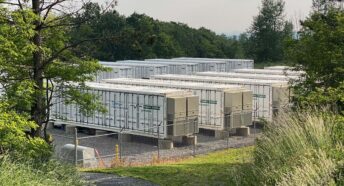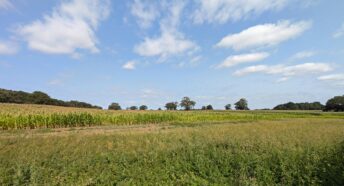More solar farm proposals across the county, and what can be done about it
In the wake of COP26 and increasing awareness of the need to mitigate climate change, there have been a large number of new proposals for ‘greenfield’ solar farms all across England and here in Hertfordshire. We believe solar energy has a role to play in our collective action against climate change, but not at the expense of the environment.
We are increasingly concerned as we learn about more proposals for industrial-scale solar farms around Hertfordshire.
Why aren’t solar farms in the countryside a good thing?
The UK (and the world) needs to move away from fossil fuels to help combat climate change. So it’s tempting to think of all forms of renewable energy as being good for the planet. But not all forms of renewable energy are equally desirable or helpful.
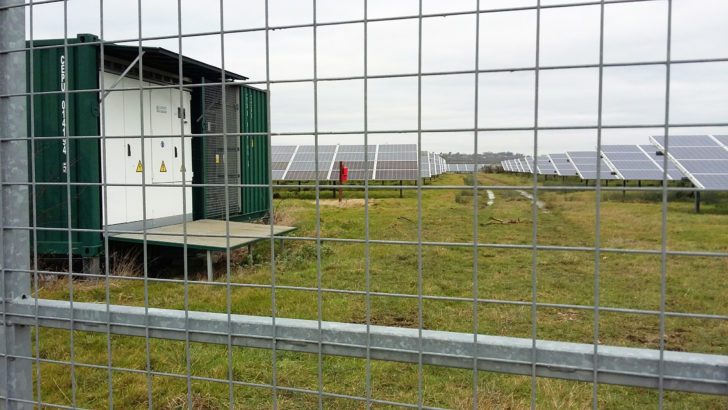
Solar energy should be part of our energy mix, but not as the default answer. Solar is relatively inefficient compared to other renewables. For example, energy production efficiency is circa 11 – 15% for photovoltaic panels as compared with around 50% for offshore wind turbines. Solar panels can’t produce much electricity at night or when it’s cloudy or rainy.
The UK Government has published its plan for offshore wind energy to be sufficient for all of the country’s household demand by 2030, as set out in the recently-published 10 point plan for a green industrial revolution. This government policy weakens the case for solar farms.
Also, the solar energy trade association, Solar Energy UK, estimates there are over 617,000 acres of suitable, south-facing commercial rooftops currently available for solar panels. We think putting solar panels on rooftops is absolutely the right thing to do. After all, how many commercial buildings and car parks currently have solar panels? Community buildings including schools and village halls could have solar panels as well. We want all suitable rooftop capacity to be utilised for solar energy production before building industrial scale solar farms on greenfield sites in the countryside.
Specifically, we think these large solar farms cause harm to the environment. Here’s why.
How do solar farms harm the environment?
Each of the proposed solar farms in Hertfordshire would, if implemented, cause the following harms.
Industrial development of designated protected landscapes
The proposed sites are all either within the Green Belt which is protected from inappropriate development in both National and local planning policies, or in locally-designated Rural Areas Beyond the Green Belt which have statutory protection in district Local Plans. The proposals all include the installation of many thousands of photovoltaic panels and their steel / aluminium support frames, along with other infrastructure including battery storage containers, inverter / transformer stations, switchgear and storage buildings, and perimeter fencing and security cameras. This is an industrialisation of the landscape, which is inappropriate development in designated protected areas.
Loss of high quality agricultural land. Domestic UK food production is important
All of the land being proposed for these solar farms is productive agricultural land under cultivation, and much of it is “Best and Most Versatile” agricultural land, defined as Grades 1, 2 and 3a. Government policy is that Best and Most Versatile agricultural land be retained for agricultural use, for food production. And even lower grade agricultural land, if utilised productively, is arguably more valuable for food production than for solar energy production, as growing crops locally helps to reduce the carbon footprint of the food chain.
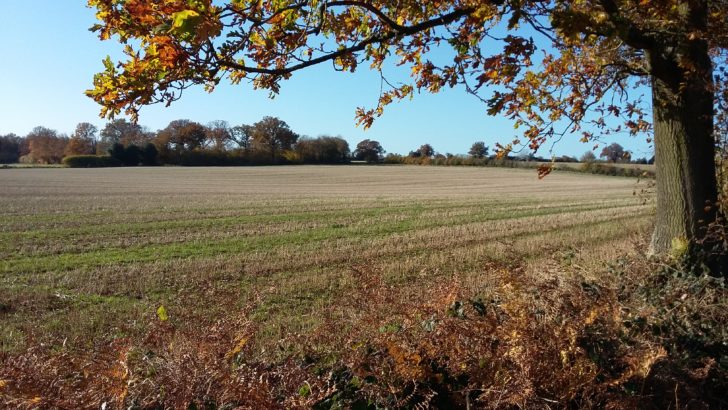
Loss of public and residential amenity
The landscapes around these proposed solar farm sites are all open countryside with long views and wide horizons. The public amenity value from these landscapes is considerable and if the solar farms go ahead, that will be lost for more than a generation. (Note: most proposals state the solar farm is “temporary” for circa 40 years. We believe 40 years is not “temporary”!)
Loss of recreational amenity
Do you fancy a walk through a solar farm? If these solar farms go ahead there would be a hugely destructive change in character of the footpaths and public rights of way which are adjacent to or run across most of the proposed sites. Instead of walking, running, bird-watching, and wildflower-photographing in an open landscape, we would all be navigating our way alongside 2 metre high metal fencing with 4 metre high CCTV cameras monitoring our every footstep. And the onsite machinery for converting the power for feeding into the grid can be noisy.
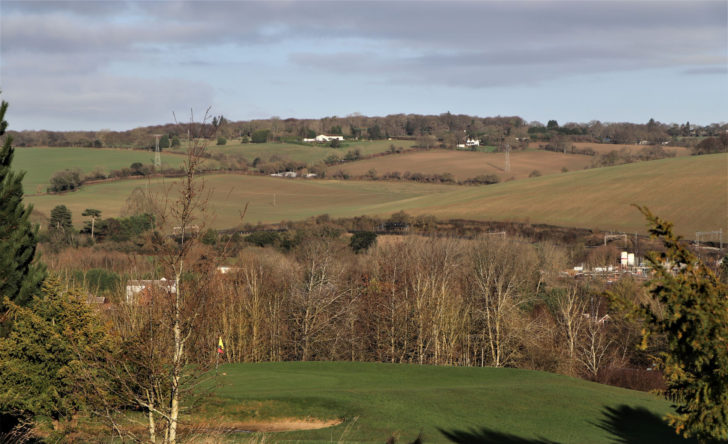
Detrimental impact on wildlife
Despite assertions to the contrary by the developers, the habitats of many species of wildlife would be compromised. The hares, deer, red kites, owls, lapwings, sky larks, bats and pollinating insects would all have their habitats compromised by an ocean of glass panels and a wall of metal fencing. Birds can be injured by mistaking the glass panels for water. Small mammals can be harmed or killed if they become trapped in the fencing. And pollinating insects would struggle because there is too much shade under the panels for sun-loving wildflowers to thrive.
So what are we doing about these solar farm proposals?
Once we hear about a proposal, we make people aware via our website and social media.
At the pre application stage, we express our concerns to the developer and advise local people and groups to do the same.
We also provide bespoke advice to local people who become members of CPRE Hertfordshire, and we encourage everyone to join us. We are a membership charity and depend upon the income from membership subscriptions to do our work. Joining is quick and easy online at become a member.
At the planning application stage, we submit our objection in writing and share our rationale with our members and local groups, encouraging them to submit their own comments. Again, we can provide more bespoke advice to our members.
What can you do about it?
If you know about a proposal near your community, please get in touch to make sure we know about it.
And please ensure that your neighbours, the local community, and people in any nearby towns and villages are all aware of the proposal. Communities working together can make a big difference. It is really important to urge as many people as possible to object.
There is evidence that solar farms might be approved if not many people object. By contrast, where large numbers of local people object, this may influence the planning decision. We believe clear local opposition makes a difference.
